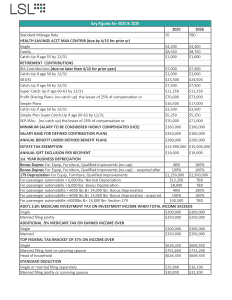At this time of year, we like to let our clients, who own or are in the market to buy Electric Vehicles (EVs), know about the latest Clean Vehicle Tax Credit rulings. It’s good news. The U.S. Department of the Treasury’s October 6, 2023 press release gives access to the (27-page-long!) guidance that explains the expanded access to clean vehicle tax credits and helps car dealers grow their businesses. The key takeaways are these:
- All eligible buyers, regardless of federal tax liability will get a full tax break.
- The ruling should make it easier for consumers to get a $7500 tax credit for new EVs and a $4000 credit for used EVs.
- Only vehicles purchased under the consumer clean vehicle credits are eligible for this benefit.
- There will be a point-of-sale purchase discount from car dealers starting in 2024.
The New Clean Vehicle Credit
The new, revamped Clean Vehicle Credit under Internal Revenue Code (IRC) §30D replaces the “Inflation Reduction Act of 2022” (IRA 2022), which we discussed in our January 2022 post. The most significant change, as described in the guidance, is about “The Transfer of Credit under Sections 30D and 25E from the Taxpayer to the Eligible Entity and Updated Requirements for Qualified Manufacturers and Sellers.”
The new EV credits were phased in over two years, starting on the enactment date, August 16, 2022, through December 31, 2023. Once fully phased in, the new credit is scheduled to run through the end of 2032.
The chart below shows the phase-in of the credit based on the date the purchase contract was signed and when the vehicle was placed in service.
Applying the Rules
| Purchased/Placed in Service | Application of Rules |
| Purchased Vehicle Before August 16, 2022. | Pre-IRA 2022 Rules, including limitation of 200,000 per manufacturer. |
| Purchased after August 16, 2022, and placed in service before 12/31/2022. | Pre-IRA 2022 Rules, but only if vehicle was assembled in North America. If the vehicle is not assembled in North America, the taxpayer cannot claim the credit. |
| Placed in service during 2023. | IRA 2022 Rules apply, credit must be claimed on tax return. |
| Placed in service after 2023. | IRA 2022 Rules apply, credit may be transferred to the dealer at the time of purchase to be used as down payment but is limited to two personal use vehicles per year. |
Amount of Credit
The maximum amount of credit is $7,500 per vehicle if the vehicle’s critical materials and battery components are manufactured, processed, extracted, or produced in the United States or in countries in which the United States has entered a free trade agreement (IRC §30D(b)).
For vehicles purchased after April 17, 2023, if the vehicle meets only one of the requirements, then the credit is limited to $3,750.
Modified AGI Limit
To qualify for the credit, a taxpayer’s modified AGI must be equal to or less than the following amounts in either the current or the prior tax year:
- Married Filing Joint: $300,000
- Head of Household: $225,000
- All others: $150,000
These limitations are not adjusted for inflation and are a hard cut-off, meaning one dollar over the limit and the taxpayer would not qualify for the credit.
Vehicle Price Limitation
The credit may not be claimed for vehicles whose manufacturer’s suggested retail price (MSRP) as labeled on each vehicle exceeds:
- Vans, Pick-up Trucks, or SUVs: $80,000
- All Other Vehicles: $55,000
These limitations are not adjusted for Inflation. The MSRP does not include destination charges, optional items added by the dealer, and any fees.
What’s New for 2024:
Starting in 2024, taxpayers will be able to transfer the credit to the dealer at the time of purchase. The credit would act as additional cash toward the purchase of the vehicle. In other words, the dealer has to treat that credit as cash belonging to the buyer—meaning they are not supposed to manipulate any other incentives or discounts normally offered so that the dealer can benefit from the credit.
If the credit is transferred, the taxpayer would still need to reconcile the credit on their personal tax returns to ensure that they still qualify for the credit, or the credit would need to be repaid on their tax return.
The good news is there will be no credit recapture if a taxpayer claims an advanced vehicle credit at the dealer, but then their tax liability is not high enough to use the entire credit. For example, if you took an advance credit at the dealer for the full $7,500 which was an extra down payment towards the vehicle cost and later when you prepared your tax return your tax liability was only $5,000 (so were not able to use the full credit), you would not need to repay the $2,500 of credit that went unused.
The IRS also released rules disallowing credits to taxpayers who claim an advanced clean vehicle credit at the dealership and resell the vehicle within a short period of time. Meanwhile, fact sheets, FAQs, checklists, and other materials for consumers and dealers should be available as of the end of December 2023.
Note: it is important to realize that auto dealers must register with the IRS “to offer consumers clean energy tax credits for qualifying electrified products.” In case you want to see what it looks like, the website allowing car dealers to register is here.
QUESTIONS?
Please get in touch with LSL CPAs for an under-the-hood assessment of your EV tax credits for 2024!




